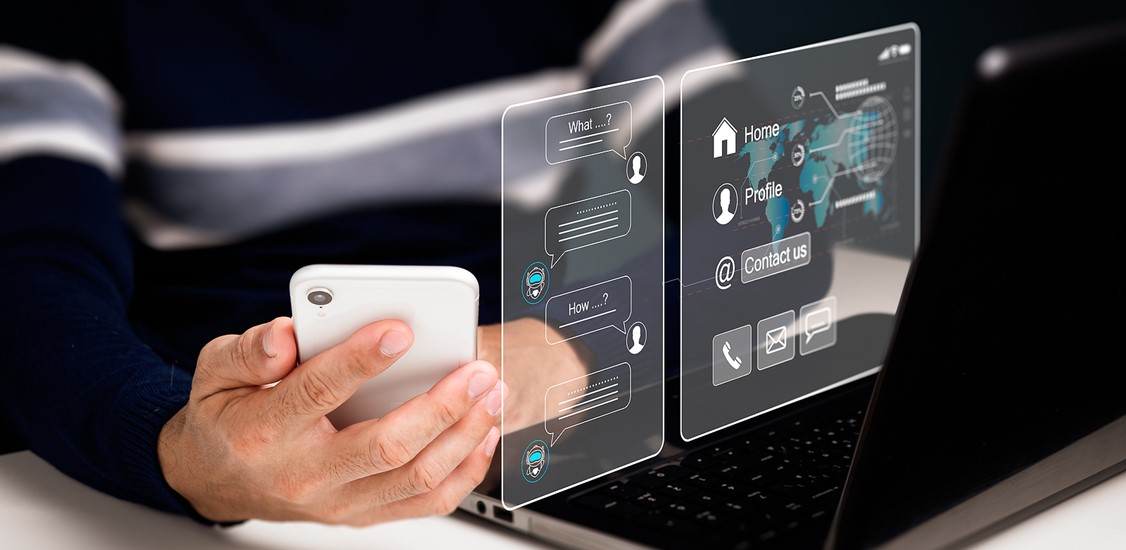Remember the scene? Through a dazzle of special effects, Robert Downey Jr., aka Marvel’s Iron Man, converses with his AI assistant J.A.R.V.I.S. to solve a pressing problem. Even if you’re not a sci-fi fan, there’s a lot worth noticing about the interaction - particularly how our superhero gets the job done. His workflow is an engaged conversation with one AI, where he interacts with output to prompt his thinking, inform his decisions, and accomplish his goals, while moving seamlessly through relevant data and insights in a way that works best for him.
He very noticeably doesn’t interact with dozens, even hundreds, of applications with different user interfaces, different bells and whistles, and different steps to learn all of what powers a workflow like his. He simply leverages the capabilities of those applications in one elegant and intuitive single system of delivery: his faithful AI. The applications and software remain behind the scenes, abstracted away. In a generative AI world, that fiction is no longer as far off as it may have seemed just a few years ago.
In fact, the Digital Adoption Platform (DAP) is today’s answer to the ever-growing roster of enterprise applications and user interface chaos that slow down work and water down software investment. DAPs sit on top of applications providing customized user guidance and automation in the flow of work, helping end-users navigate the technology tools at their disposal to their fullest while providing actionable data analytics to leadership. Already powered by AI and for AI, DAPs are nascent single systems of delivery and will continue to evolve into the faithful friend businesses need to manage the profound pace of change upon us.
Deliver capabilities, not myriad interfaces
Working in a world with single-system delivery doesn’t imply a single-vendor world or even a single ecosystem of applications. Far from it. Instead, we’re facing a “great replatforming” where businesses will deploy a single intelligent interface that sits atop all of their different applications and delivers the capabilities users need. Workforces won’t need to know the peculiarities of individual software. In a short timeframe, we’ll be moving past best-of-breed applications with their own conversational AI interfaces to a user experience that isn’t splintered - much like Iron Man’s, at work and accessible from everywhere.
Capabilities are what companies and individuals value, regardless of which applications deliver them. With a single system of delivery, app interoperability will become less relevant to the user. Instead of companies building processes that require employees to engage with the user interfaces of multiple applications, employees will decide how they define, design, and deliver their work. Centers of excellence will focus on building the AI training models that deliver great digital experiences because the single system of delivery must understand intent, continuously learn, and know how to execute across many abstracted applications.
No big software manufacturer or brilliant independent AI startup will own the market on the single system of delivery. With the hyperscalers, the temptation to favor their own ecosystems will be too high. Some companies won’t care and will view a particular hyperscaler’s offering as sufficient for their needs, but a lot of companies won’t be satisfied locked into a model favoring one ecosystem.
It’s the neutral third parties that will compete to build the most intuitive and robust single system of delivery. Every business trying to evaluate these systems will want to consider three fundamentals:
- The system’s data flywheel,
- A conversational interface, and
- Intelligent execution.
Data flywheel: the dataset that’s constantly adapting
We all know data is AI’s lifeblood, but a single system of delivery specifically requires a unique kind of data flywheel fed by three sources: publicly available large language models (LLMs), a customized LLM, and what might be called a “large interaction model” (LIM).
By definition, publicly available LLMs will not differentiate systems of delivery. Everyone will enjoy the same access to these models. When it comes to LLMs, we’re all still discovering what the most reliable, well trained, and legitimate ones are.
But each company implementing a single system of delivery will bring their own proprietary policies, procedures, and guidelines to train the models on the way they’d like operations executed. Constantly staying up-to-date on those internal processes and policies, which reflect governance specific to the company, is vital. For example, a customized LLM will reflect an organization’s information security policies, providing guardrails for certain applications such as those using generative AI. Failure to follow these policies could lead to data breaches, opening the company up to significant risk. These are data points custom to an individual company and the model needs to train on them.
What will truly set systems of delivery apart is their ability to understand how workflows are executed across an organization, on which applications, task by task. This third part of the data flywheel is dependent on a large interaction model, which enables the best systems of delivery to continually learn and adapt based on how human-computer interactions at a company evolve. These systems will capture data about how users interact with different applications across a substantial period of time, across verticals, across geographies, and across many businesses of many sizes deploying the applications. What capabilities do they use and value? Where does the interfacing friction with the applications occur? What types of interactions can be unattended and automated, and what types of interactions should be attended by a human?
In full disclosure, the company I work for has been building a large interaction model for more than a decade. The dataset includes some 6.5 billion interactions processed just last year across hundreds of widely used applications, as well as wide distribution of a browser extension on millions of computers. Customers continue to collect interaction data in a way that doesn’t compromise anyone’s personally identifiable information. Rather, it’s a massive, unique knowledge base of human-computer interaction and behavior data critical for DAP to progress to the next phase of single-system delivery.
Conversationally savvy user interface with interactive output
A conversational interface through which end users can make requests, give commands, ask for clarifications, provide confirmations, and make modifications is central to the single-system layer manipulating all of the apps beneath. Whether the interface enables type, voice or both, humans should be able to engage it smoothly with natural language.
The key is that humans will be asking for and accessing different capabilities from many applications, unconcerned about which menu to open and which combination of keys to hit to find functionality. Remember Tony Stark’s easy and efficient conversations with J.A.R.V.I.S. There’s no learning 17 applications, then forgetting how to use half of them during interim periods.
The ability to assess and manipulate output in any format will be key as well. It remains exciting to think about how AR/VR, AI-powered rendering, simulation and immersive display systems, touch screens and touchless devices with gesture control will play out with a single system’s AI-driven conversational interface.
Intelligent execution—capable of attended and unattended automation
Finally, a single system of delivery needs to recognize user intent, account for context, execute commands with precision, and be capable of both attended and unattended automation. A reliable single system will know when to fully automate actions, keeping them abstracted away, and when confirmation or other human assessment is required. That’s all summed up in intelligent execution.
If you want to send a particular type of marketing email, for example, the AI must understand your intent and the context of your workflow without putting you through unnecessary hoops. It must figure out that you’re not talking about sending an email to your coworkers, but rather, accessing a capability for a consumer campaign inside your marketing automation software. The fewer prompts needed to establish intent and context, the better. The ability to continuously learn and the capacity to execute intelligent actions across most applications will have a profound impact on the adoption of single systems of delivery.
Whatever AI forerunners to the idea of J.A.R.V.I.S. may come, a capabilities orientation, three-part data flywheel, conversational interface, and intelligent execution will all be essential components. The digital adoption platform is poised to become the ideal single system of delivery that will serve as the new, indispensable assistant to innovation. With transformative human-computer interactions, it will help usher in an era of heightened productivity — even hyperproductivity — unlike anything we’ve seen to date.






















